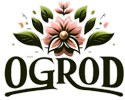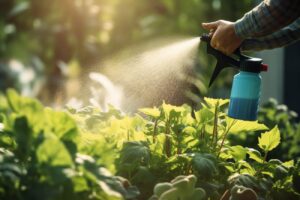Dithane is a widely used fungicide that plays a crucial role in protecting crops from fungal diseases. In this comprehensive guide, we will explore the various aspects of Dithane, including its uses, benefits, application methods, and potential considerations for optimal effectiveness.
Understanding dithane
Dithane is a brand name for a group of fungicides containing the active ingredient mancozeb. Mancozeb is a protective fungicide that belongs to the ethylene bisdithiocarbamate (EBDC) chemical family. It is commonly used in agriculture to control a broad spectrum of fungal diseases that can affect crops.
Uses of dithane
Dithane is primarily used to prevent and control fungal infections in various crops, including fruits, vegetables, and grains. It is effective against a range of pathogens, including but not limited to blights, rots, and mildews. The fungicide acts as a protective barrier, preventing the growth and spread of fungi on plant surfaces.
Application methods
The application of Dithane can vary depending on the type of crop and the specific fungal disease being targeted. Common application methods include foliar sprays, seed treatments, and soil drenching. It is essential to follow the manufacturer’s guidelines and recommended dosage for each application method to ensure optimal results.
Benefits of using dithane
Dithane offers several benefits in the realm of crop protection. Some of the key advantages include:
- Effective broad-spectrum control of fungal diseases.
- Prevention of crop yield loss due to fungal infections.
- Reliable protection for various types of crops.
- Compatibility with integrated pest management (IPM) strategies.
Considerations for use
While Dithane is a valuable tool in agriculture, there are considerations to keep in mind for responsible and effective use. These include:
- Adherence to recommended application rates to prevent resistance.
- Proper storage and handling to maintain product efficacy.
- Awareness of potential environmental impact and adherence to regulations.
- Regular monitoring for signs of resistance development in fungal populations.
Faqs about dithane
Q: is dithane safe for human health?
A: When used according to the recommended guidelines, Dithane poses minimal risk to human health. It is essential to follow safety instructions on the product label.
Q: can dithane be used on all types of crops?
A: Dithane is suitable for a wide range of crops, including fruits, vegetables, and grains. However, it is crucial to check the product label for specific crop recommendations.
Q: how often should dithane be applied?
A: The frequency of Dithane applications depends on factors such as crop type, disease pressure, and weather conditions. Follow the recommended application schedule provided by the manufacturer.
Q: does dithane have any impact on non-target organisms?
A: Dithane should be used with caution to minimize any potential impact on non-target organisms. Follow guidelines to reduce environmental risks.
Zobacz także:






